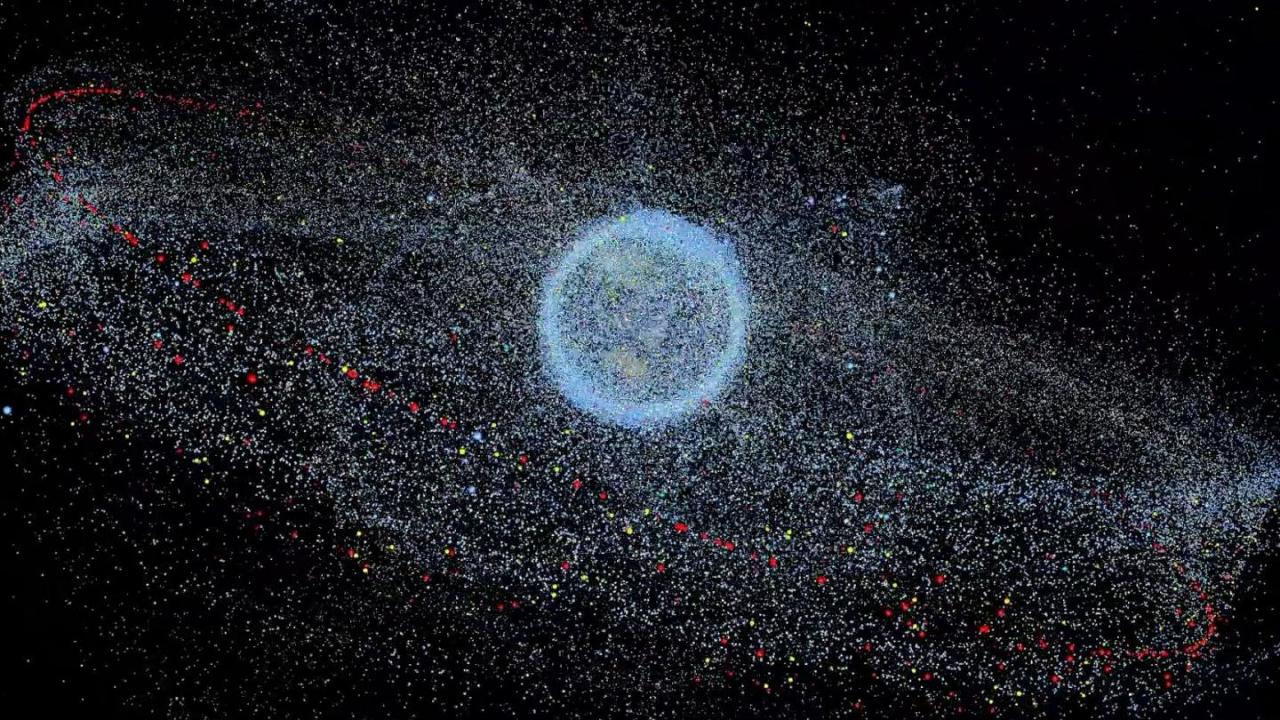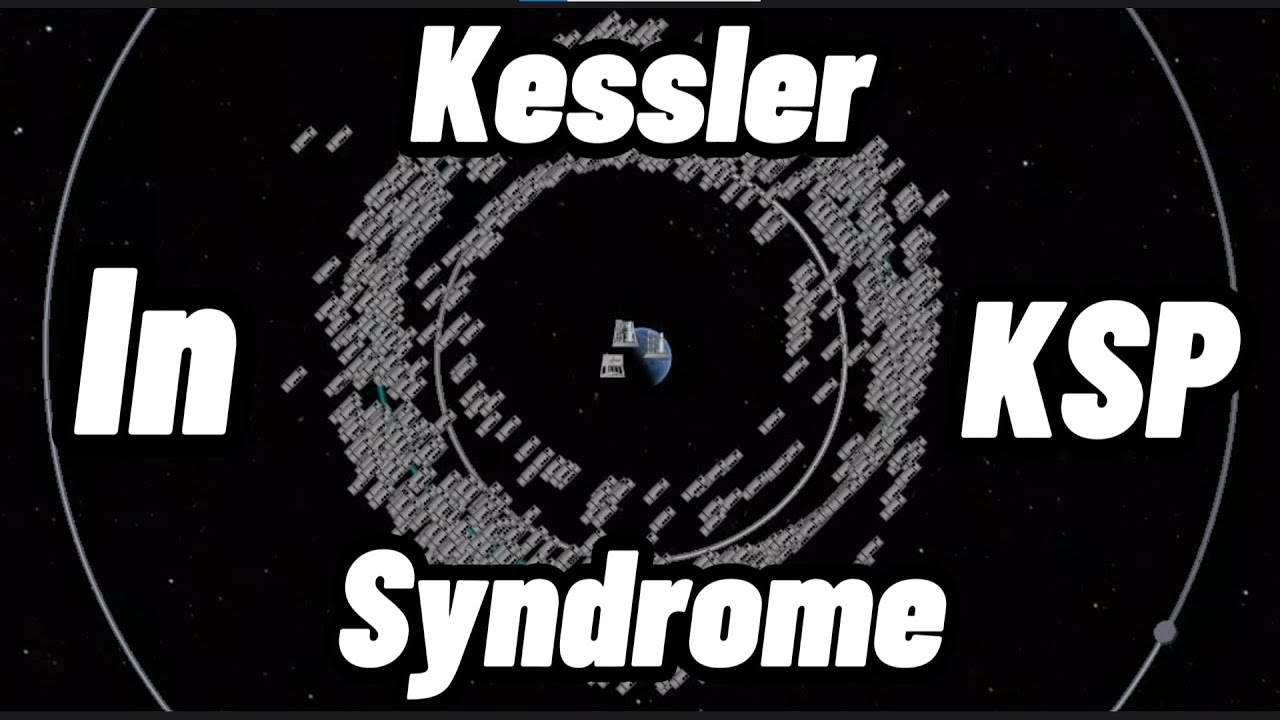What is ‘Kessler Syndrome’ — and why do some scientists think the threat of a catastrophic chain reaction of space debris collisions is real? It’s a fascinating and potentially devastating scenario involving an exponential increase in space junk, creating a cloud so dense that it could cripple our ability to launch satellites or even conduct space exploration. This isn’t just science fiction; it’s a very real concern based on the increasing amount of debris orbiting our planet.
Imagine a domino effect in space, where a single collision triggers a cascade of further collisions, creating a runaway chain reaction. That’s essentially Kessler Syndrome. This article will explore the science behind this phenomenon, the ongoing debate surrounding its likelihood, and what we can do to prevent this potentially disastrous future.
Kessler Syndrome: A Cascade of Catastrophe in Space
Imagine a chain reaction in space, where a collision between two defunct satellites triggers a domino effect, creating a cloud of debris that makes further space travel nearly impossible. That’s the essence of Kessler Syndrome, a hypothetical but increasingly concerning scenario with potentially devastating consequences for our spacefaring future.
Definition of Kessler Syndrome

Kessler Syndrome describes a scenario where the density of objects in low Earth orbit (LEO) becomes so high that collisions create a cascade of further collisions, exponentially increasing the amount of space debris and rendering certain orbital regions unusable. This concept was first proposed in 1978 by NASA scientist Donald J. Kessler and Burton G. Cour-Palais, highlighting the potential for a self-sustaining chain reaction in space.
The core components are relatively simple: existing space debris (from defunct satellites, rocket stages, etc.), collisions between these objects, and the resulting fragmentation into even more debris. Each collision generates a shower of smaller pieces, increasing the probability of further collisions, leading to an exponentially growing cloud of debris.
The Mechanics of Kessler Syndrome
The collision process itself is a matter of orbital mechanics and relative velocities. Objects in LEO are moving at incredibly high speeds, meaning even a small collision can generate significant damage and create a large number of smaller fragments. These fragments, ranging in size from millimeters to meters, then continue to orbit the Earth, posing a threat to operational satellites and future missions.
The exponential growth comes from the increased probability of collisions as the debris density increases. More debris means more chances for collisions, leading to even more debris, and so on. This positive feedback loop is what makes Kessler Syndrome so dangerous.
Different types of space debris pose varying threats:
| Type of Debris | Size Range | Impact | Mitigation Difficulty |
|---|---|---|---|
| Rocket Bodies | Meters | Catastrophic damage to satellites | High |
| Satellite Fragments | Centimeters to meters | Significant damage or disablement | Medium |
| Paint Flakes & Micrometeoroids | Micrometers to millimeters | Surface damage, potential for long-term degradation | Low (but numerous) |
| Exploded Satellite Debris | Millimeters to meters | Highly variable, potentially catastrophic | Very High |
Concerns Regarding Kessler Syndrome
The potential threats to space activities are immense. A fully realized Kessler Syndrome could render LEO largely unusable, severely impacting satellite-based communication, navigation, weather forecasting, and Earth observation. Long-term consequences include a drastic reduction in our ability to conduct space-based research, and potentially even halting space exploration altogether.
Satellite operations would become incredibly risky, with a high probability of catastrophic collisions. The cost of launching and maintaining satellites would skyrocket, potentially making many applications economically unfeasible. Current estimates of space debris already exceed predictions from earlier models, indicating a faster accumulation rate than previously thought.
Scientific Debate and Uncertainty

There’s a range of opinions on the likelihood of Kessler Syndrome occurring. Some scientists believe it’s a real and imminent threat, while others argue that current debris levels are not yet critical. Different models exist for predicting the future state of space debris, with variations in assumptions about collision probabilities, debris fragmentation patterns, and the effectiveness of mitigation efforts. These models have inherent uncertainties, making precise predictions challenging.
Okay, so Kessler Syndrome is basically a runaway chain reaction of space junk collisions. Scientists worry that it could render low Earth orbit unusable, a real-world problem you might even find mentioned in the trivia at the Big City Quiz of the Year 2029. It’s a serious threat, highlighting the need for better space debris management to prevent this catastrophic scenario from unfolding.
Arguments against immediate threat often point to ongoing efforts to mitigate debris, while those concerned highlight the exponential nature of the problem and the potential for unforeseen events to trigger a cascade.
Mitigation Strategies

Current and proposed mitigation strategies focus on preventing the creation of new debris and actively removing existing debris. This includes stricter guidelines for spacecraft design and disposal, active debris removal missions, and international collaborations to coordinate efforts.
A hypothetical space debris removal mission might involve a robotic spacecraft equipped with a net, harpoon, or laser to capture and de-orbit debris. Challenges include the sheer volume of debris, the varying sizes and shapes of objects, and the technological complexities of operating in a harsh space environment. International collaborations, such as the Inter-Agency Space Debris Coordination Committee (IADC), are crucial for developing and implementing effective strategies.
- Improved spacecraft design for easier de-orbiting.
- Development of advanced debris removal technologies.
- International agreements on responsible space practices.
Illustrative Example: A Hypothetical Scenario, What is ‘Kessler Syndrome’ — and why do some scientists think the

Imagine a scenario where a collision between two large defunct satellites in a crowded orbital region triggers a chain reaction. The initial collision generates thousands of fragments, which then collide with other satellites and debris, creating a rapidly expanding cloud. Within weeks, a significant portion of LEO becomes unusable, causing widespread disruption to satellite-based services globally. The visual impact would be stunning – a vast, shimmering cloud of debris encircling the Earth, a stark reminder of humanity’s impact on space.
Consequences would extend beyond satellite operations. Navigation systems would become unreliable, impacting air and sea travel. Weather forecasting would be hampered, affecting agriculture and disaster preparedness. Scientific research reliant on Earth-observing satellites would be severely limited. The cost of restoring functionality would be astronomical, both economically and technologically.
The incident would serve as a stark reminder of the need for proactive and collaborative efforts to address the growing threat of space debris.
Closing Summary: What Is ‘Kessler Syndrome’ — And Why Do Some Scientists Think The
The Kessler Syndrome scenario highlights the urgent need for international cooperation and technological innovation in space debris mitigation. While the exact timing and severity remain uncertain, the potential consequences are too significant to ignore. By actively addressing the growing problem of space junk, we can protect our access to space and ensure the continued success of satellite technology and space exploration for generations to come.
The future of space depends on our proactive response today.
Okay, so Kessler Syndrome is this scary idea where space junk collides, creating more junk, and eventually making space unusable. It’s a bit like the Sacramento Kings’ situation; check out this article about their firing of Mike Brown: Report: Kings part ways with former coach of the year Mike Brown. Just as a chain reaction of debris can cripple space travel, poor team management can similarly derail a promising season, leading to unexpected and potentially disastrous consequences for the future.
Detailed FAQs
What causes space debris?
Space debris comes from various sources, including defunct satellites, discarded rocket stages, and even small fragments from collisions. Even paint flecks can be dangerous at orbital speeds.
How fast does space debris travel?
Ever heard of Kessler Syndrome? It’s the terrifying idea of a chain reaction of space junk collisions, creating a cloud that makes space travel impossible. Understanding the scale of this problem requires looking at innovative solutions, like those discussed in ALW In Focus: Tijan McKenna , which highlights the crucial work being done to prevent this catastrophic scenario.
Ultimately, mitigating Kessler Syndrome is a huge challenge, demanding a multi-faceted approach.
Space debris travels at incredibly high speeds, often exceeding 17,500 mph (28,000 km/h). Even tiny pieces can cause significant damage due to their velocity.
Are there any international treaties addressing space debris?
Yes, several international agreements and guidelines exist, encouraging responsible space activities and promoting the mitigation of space debris. However, enforcement remains a challenge.
What is the difference between active and passive debris removal?
Active debris removal involves sending spacecraft to capture or destroy debris. Passive methods focus on designing spacecraft to minimize debris creation and de-orbiting at the end of their life.
